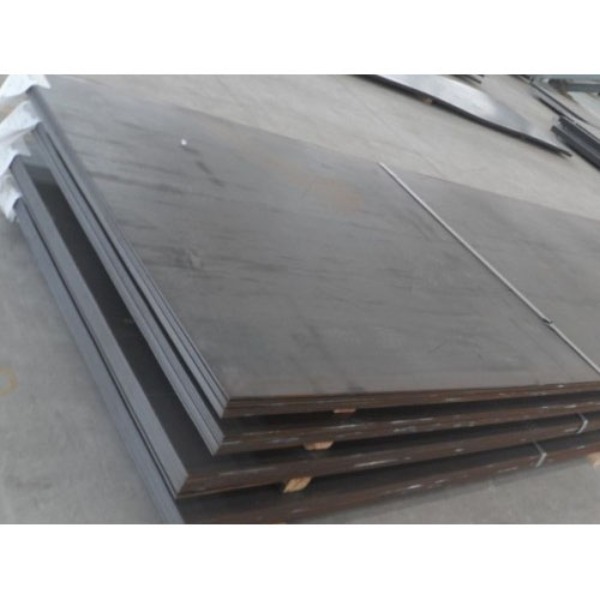Understanding the Equivalents: S235JR vs A36 vs E250BR In the world of structural steel, understanding international equivalents is key to ensuring you select the right material for your project. Three commonly referenced grades are EN 10025 S235JR (Europe), ASTM A36 (USA), and IS 2062 E250BR (India). Though named differently, these grades often serve similar functions in construction and fabrication. 📌 What is S235JR? S235JR is a non-alloy structural steel grade under the EN 10025-2 standard, widely used across Europe. The “JR” indicates that the material has undergone Charpy V-notch impact testing at 20°C, ensuring reliable toughness. Yield Strength: 235 MPa Tensile Strength: 360–510 MPa Weldability: Excellent Applications: Structural frameworks, bridges, general fabrication 📌 What is ASTM A36? A36 is one of the most widely used carbon structural steels in North America. It’s defined under the ASTM A36/A36M standard. Yield Strength: 250 MPa (for plates ≤ 20mm) Tensile Strength: 400–550 MPa Weldability: Excellent Applications: General structural purposes, machinery, frames, base plates 📌 What is IS 2062 E250BR? E250BR is the Indian equivalent defined under the IS 2062 standard. The “BR” suffix stands for 'Bending & Rolling', indicating suitability for forming operations. Yield Strength: 250 MPa Tensile Strength: 410–540 MPa Impact Tested: Yes (at 0°C or 20°C depending on spec) Applications: Civil engineering structures, bridges, heavy equipment 🔄 Are They Equivalent? Grade Yield Strength Impact Test Standard Region S235JR 235 MPa Yes (20°C) EN 10025-2 Europe A36 250 MPa No (optional) ASTM A36/A36M USA E250BR 250 MPa Yes IS 2062 India ✅ S235JR ≈ A36 ≈ E250BR in most general structural uses ⚠️ Slight differences in impact testing, chemical composition, and standard tolerances 🔧 Always confirm with Mill Test Certificates (MTCs) for critical projects ✅ Conclusion If you're sourcing structural steel for fabrication or construction, S235JR, A36, and E250BR can be used interchangeably for many general-purpose applications. However, for engineering-critical structures or international projects, it’s crucial to review mechanical properties and certifications.
Chat with us on WhatsApp
×
This is your website preview.
Currently it only shows your basic business info. Start adding relevant business details such as description, images and products or services to gain your customers attention by using Boost 360 android app / iOS App / web portal.
https://www.alloysteelsplate.com/latest-update/understanding-the-equivalents-s235jr-vs-a36-vs-e/123
Understanding the Equivalents: S235JR vs A36 vs E...

2025-07-04T05:16:53
Understanding the Equivalents: S235JR vs A36 vs E250BR In the world of structural steel, understanding international equivalents is key to ensuring you select the right material for your project. Three commonly referenced grades are EN 10025 S235JR (Europe), ASTM A36 (USA), and IS 2062 E250BR (India). Though named differently, these grades often serve similar functions in construction and fabrication. 📌 What is S235JR? S235JR is a non-alloy structural steel grade under the EN 10025-2 standard, widely used across Europe. The “JR” indicates that the material has undergone Charpy V-notch impact testing at 20°C, ensuring reliable toughness. Yield Strength: 235 MPa Tensile Strength: 360–510 MPa Weldability: Excellent Applications: Structural frameworks, bridges, general fabrication 📌 What is ASTM A36? A36 is one of the most widely used carbon structural steels in North America. It’s defined under the ASTM A36/A36M standard. Yield Strength: 250 MPa (for plates ≤ 20mm) Tensile Strength: 400–550 MPa Weldability: Excellent Applications: General structural purposes, machinery, frames, base plates 📌 What is IS 2062 E250BR? E250BR is the Indian equivalent defined under the IS 2062 standard. The “BR” suffix stands for 'Bending & Rolling', indicating suitability for forming operations. Yield Strength: 250 MPa Tensile Strength: 410–540 MPa Impact Tested: Yes (at 0°C or 20°C depending on spec) Applications: Civil engineering structures, bridges, heavy equipment 🔄 Are They Equivalent? Grade Yield Strength Impact Test Standard Region S235JR 235 MPa Yes (20°C) EN 10025-2 Europe A36 250 MPa No (optional) ASTM A36/A36M USA E250BR 250 MPa Yes IS 2062 India ✅ S235JR ≈ A36 ≈ E250BR in most general structural uses ⚠️ Slight differences in impact testing, chemical composition, and standard tolerances 🔧 Always confirm with Mill Test Certificates (MTCs) for critical projects ✅ Conclusion If you're sourcing structural steel for fabrication or construction, S235JR, A36, and E250BR can be used interchangeably for many general-purpose applications. However, for engineering-critical structures or international projects, it’s crucial to review mechanical properties and certifications.
2025-07-04T05:16:53

Submit Your Enquiry